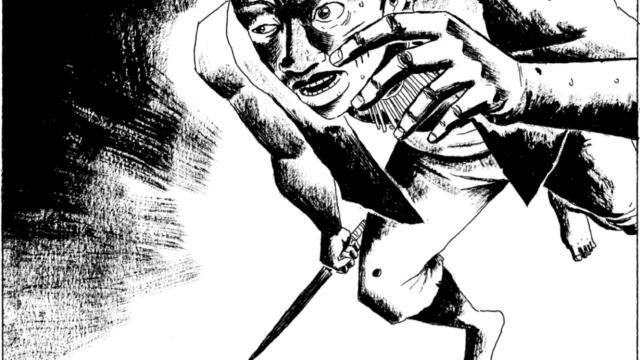Lots of clichés abound in modern-day takes on the resistance that happened during the Transatlantic Slave Trade. All too often, the focus is narrowly cast on individuals and small groups who managed to break their chains and find some sort of freedom. But what happened after that? One of history’s answers can be found in Angola Janga: Kingdom of Runaway Slaves, a new graphic novel by artist Marco D’Salete.
One underrepresented element of the centuries-long history of chattel slavery is the fact that massive communities of black people fought against their abduction and indenture. The people who were stolen from their native continent didn’t just resign themselves to their fate. Everywhere chattel slavery existed, there were maroon communities of runaway and free black people who lived in defiance of it.
By the time Brazil finally outlawed the trade of African slaves in 1886, the Portuguese colony had imported almost five million people to labour on sugar cane plantations, lumber operations, and gold and silver mines. If you’re not from Brazil, you may not know just how far back African cultures extend in the Latin American country’s past. Two graphic novels by D’Salete do a great job of excavating that past with taut, masterfully crafted stories.
I first encountered D’Salete’s work earlier this year, when I walked past a Black History Month display in the graphic novel section at Austin’s Central Library and his book Run For It caught my eye. I’d never heard of it and quickly got sucked into the short stories focusing on African slaves making the risky decision to resist the oppressive system they lived under. In Run For It—published in the U.S. by Fantagraphics in 2017—D’Salete depicts men and women driven to flee the violence and anger brought on by dehumanization forced upon them on the plantations. His newest work, Angola Janga, isn’t quite a direct sequel, but it does show what happened after slaves ran for their lives.
In the book’s backmatter, D’Salete says Angola Janga took him more than 11 years to complete. Weighing in at 428 pages, the hefty tome seethes with historical detail which serves as an anchor to the fictionalized narrative that spans decades.
The Afro-Brazilian artist opens his newest work by showing just how dangerous it was to journey to the secret fiefdoms, which harbored tens of thousands of Africans. Two main characters named Soares and Osenga have to deal with slaveholders who refuse to honour letters of manumission, the dangers of the dense forest, and hunters who earn a living by capturing runaway Africans.
The Palmares War shown in Angola Janga went on for more than 100 years, with Dutch, Portuguese, and African factions fighting each other in a long-running series of conflicts. While there is a record of personal journals and official correspondence from colonizers, so much detail of how the escaped slaves lived has been lost to history. So, it’s thrilling to see D’Salete re-imagine and reclaim that history in these pages.
Readers get a sense of asymmetrical diplomacy in sequences that show wary negotiations between colonial governors and leaders from Angola Janga. While the colonials received orders from the Portuguese royal court, they had to deal with the widespread fear of slave revolt.
On the other side, the leaders and citizens of the mocambo villages engaged in philosophical debates about whether to negotiate with the colonial powers that once enslaved them. In-fighting began to fester in the hidden communities, and D’Salete deftly humanizes the historical figure Antonio Soares, who would ultimately betray the palmaristas back to the slaveholders. Moments that highlight former slaves holding onto their African folkways stand in stark contrast to scenes showing the Catholic Church’s entanglement in the “peculiar institution,” as slavery was called in the United States.
There’s a stripe of magical realism and dreamlike ideation running through D’Salete’s work that’s exciting to encounter because it imparts a transcendent context to the stories he’s telling. When a little black girl on a plantation dreams of gears in a mill ceaselessly grinding away, it isn’t just about her own subconscious fears. The panels of the dream sequence—and the one preceding it, zooming from a cosmic view of Earth into a modern city street—serve as a metaphor for how the centuries-old legacies of slavery continue on today.
Angola Janga gives readers access to a vital living history that centres resistance alongside the stories of black suffering we’re so used to. Angola Janga is in bookstores this month.
